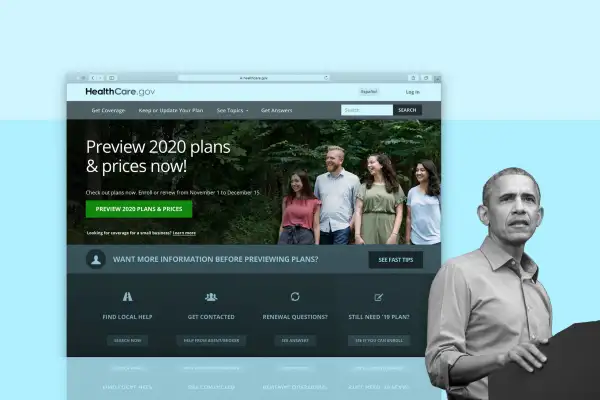Obamacare Open Enrollment Starts Tomorrow

Obamacare open enrollment 2020 begins Friday for the roughly 11 million Amerians who have health insurance through the Affordable Care Act, and for those thinking of joining them and signing up for individual or family coverage for next year.
There’s no longer a federal penalty for going uninsured — the government lowered the penalty to $0 for 2019 and beyond, effectively eliminating the individual mandate, as the requirement to buy coverage was called. But Washington, D.C. and a handful of states — including California, New Jersey, Rhode Island, and Massachusetts — have established their own mandates, and their residents must buy coverage or pay a penalty unless they qualify for a limited number of exemptions.
Even if you’re not required to have insurance, it’s a good idea to get covered if you can afford it. Going uninsured leaves you vulnerable to catastrophic costs if you get a serious diagnosis or have a bad accident. Here’s what you need to know:
When Is Obamacare Open Enrollment for 2020?
Open enrollment runs from Nov. 1 through Dec. 15 for coverage starting Jan. 1, 2020. During this window, current customers can switch their health insurance plan for next year, while new customers can buy a policy from scratch. A handful states have extended their deadlines beyond Dec. 15, although you may still need to enroll by that date for your coverage to start on Jan. 1.
If existing customers do nothing, they’ll be automatically re-enrolled in their current plan for next year. If prospective customers do nothing, they’ll be shut out of the market for 2020 coverage unless they have a baby, move, lose job-based coverage, or experience another life event that would qualify them for a special enrollment period.
Where is the Health Insurance Marketplace?
Most states use the federal marketplace at healthcare.gov, and you can buy your policy directly on that site. Around twelve states and Washington, D.C. operate their own state-based exchanges, but you can still get to them from healthcare.gov: enter your zip code and the site will provide a link to your state’s health insurance marketplace.
Healthcare.gov isn't the only place you can enroll in a major medical plan — you can buy one through a broker as well. But beware: outside web sites may also sell plans that are not comprehensive health insurance, such as cancer-only policies and short-term plans that are cheaper but come with a host of exclusions. These plans have been aggressively marketed, confusing some consumers into thinking that they're more comprehensive than they are. Brokers can provide useful help in comparing your options, but before buying through one, make sure you can find the exact same plan on healthcare.gov, says Karen Pollitz, senior fellow at the Kaiser Family Foundation. (Visit the foundation’s comprehensive FAQ page on open enrollment here.)
No matter where you buy, “It’s really important to have a healthcare.gov account,” Pollitz notes. Come tax time next year, it will be handy for you to have all your records in one place. Plus, if the marketplace needs to contact you, it’s good to have your information on record.
How to Get Affordable Health Insurance
The good news is that premiums on the exchanges will be flat on average next year after a couple years of double-digit increases. The bad news is that the cost of coverage remains prohibitive for the roughly 10% of consumers whose incomes are too high to qualify them for government subsidies that lower their monthly premium cost. The subsidy threshold for 2020 is based on the federal poverty levels for 2019, and the upper income limit is $49,960 for an individual, $67,640 for a couple, and $103,000 for a family of four.
Before you shop for policies, input your estimated income for 2020 into healthcare.gov so you can see health insurance quotes that reflect your own, individual costs. “Don’t shop on the sticker price,” Pollitz says.
Even if you're happy with your coverage, it's a good idea to compare your options. For starters, your premium subsidy for next year could change — it's based on both your income and the benchmark silver plan in your area, which can vary from year to year — so it’s important to input your projected 2020 income to get an updated estimate of what you’ll owe for your current coverage or any alternatives. What's more, the government has added quality star ratings to the plan displays on healthcare.gov this year. Plans are ranked from one to five starts (with five being the highest) based on their medical care, member experience, and plan administration.
Lastly, if you want to keep your doctors, make sure they take any plans you're considering: call the doctor's office and read them the full name of the plan to verify that they accept it.
